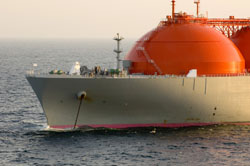Innovative ship-to-shore power transfer
One concept promoted by the shipping industry to assist in reducing GHG emissions is switching off a ship’s machinery while docked for loading and unloading and supplying residual power needed by connecting to the local area grid. Researchers supported by EU funding for the ‘Power generation during loading and unloading’ (PLUG) project designed a system for safe and fast transfer of up to 25 Megawatts of power between carriers and terminals. Using LNG/container carriers for temporary renewable power sources in response to fluctuating need could save the EU millions of euros annually. In addition, using the local power grid to supply LNG/container carrier needs has the potential to significantly reduce local and global carbon emissions. The researchers conducted analyses of the software demonstrator based on different pricing models and developed a business model for operation of PLUG based on the well-known e3value business methodology developed at Free University of Amsterdam. The PLUG system should strengthen the European shipyards’ position in electric propulsion systems for LNG and container carriers, further enhancing its position as world leader among shipping equipment suppliers.

